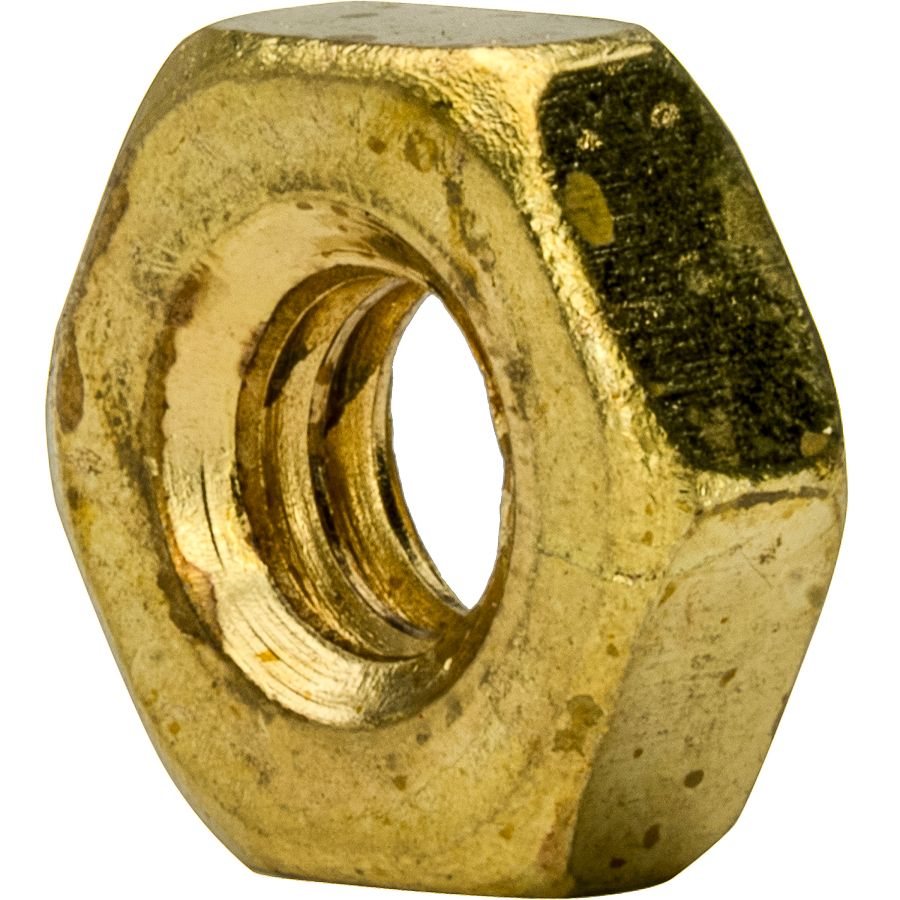What Is a Hex Nut?
Ever wondered what keeps your car's engine from rattling apart at 70mph? Or how massive steel beams stay firmly connected on those towering skyscrapers? Meet the humble hex nut.
Despite their small size, hex nuts are engineering marvels that help hold our modern world together. Each one represents centuries of engineering refinement, with a simple but clever design that's proven to be one of the most reliable ways to join materials together.
Your car's engine contains hundreds of them. That flatpack furniture you built last weekend? Hex nuts made it possible. Even the International Space Station relies on specialized hex nuts to keep its modules connected in the vacuum of space.
If you're curious about the nuts and bolts (pun intended) of hex nuts, why they matter, and how to pick the right one, let's get started.
What Is a Hex Nut?
At first glance, a hex nut might seem unremarkable - just a small piece of metal with a hole through the middle. But look closer, you'll spot two features that make it special: its distinctive six-sided shape and the precision-engineered threading inside.
Those six sides create the perfect balance between grip and clearance, allowing a wrench to easily connect from multiple angles.
This design traces back to centuries of refinement by blacksmiths and engineers, who discovered that six sides offered the best combination of strength and accessibility.
Inside each hex nut, you'll find carefully crafted threading - spiral grooves cut to match specific bolt patterns. When paired with a matching bolt, this threading creates a powerful connection, transforming two separate pieces into one solid unit.
The result? A fastener that can be quickly tightened or loosened with common tools while providing the strength to hold together everything from backyard swing sets to bridge supports.
Hex Nut Features and Benefits
Hexagonal Design
Perfect tool grip at six different angles, making it accessible even in awkward spaces. The flat surfaces also prevent rounding off during tightening - a common problem with older circular designs.
Precision Threading
Each internal groove follows strict engineering standards, with thread patterns designed to match specific bolt types. Fine threads offer stronger connections, while coarse threads assemble quickly.
Load Distribution
The seemingly simple shape hides complex force management. The height, width, and thread depth work together to spread pressure evenly, preventing weak points under stress. This engineering principle allows a small hex nut to safely secure massive structures.
Material Science
From basic zinc-plated steel for everyday projects to high-grade stainless for marine environments. Some hex nuts even combine materials, like adding nylon inserts to prevent loosening in high-vibration settings.
Size Standardization
Unified sizing across international standards (UNC, UNF, Metric) ensures consistent fit and performance. This standardization makes hex nuts interchangeable across brands and applications.
Finish Options
Surface treatments extend durability beyond the base metal. Hot-dip galvanized hex nuts can battle harsh weather, while yellow zinc-coated hex nuts also help quick grade identification during installation.
What Are Hex Nuts Used For?
Hex nuts are silent partners in almost every major construction and manufacturing project. They might be small, but their impact is anything but.
Construction and Infrastructure
Steel beams in skyscrapers stay firmly connected thanks to high-strength hex nuts. Bridge sections rely on them to handle massive loads and constant vibration. Even your home's deck posts depend on hex nuts to keep everything stable and secure.
Automotive Applications
Pop the hood of any vehicle, and you'll find hex nuts at work. They secure everything from engine components to suspension systems. That smooth ride you enjoy? Thank the precisely torqued hex nuts holding your wheel bearings in place.
Manufacturing Equipment
Factory assembly lines run on machinery held together by hex nuts. Conveyor systems, robotic arms, and packaging equipment all depend on these fasteners to maintain precise alignment. When machines run 24/7, reliable connections are non-negotiable.
Everyday Items
Take a look around your home - hex nuts are everywhere. They keep your bicycle wheels spinning, your shelving units standing, and your garden equipment working. Even that wobbly chair you fixed last weekend probably needed a hex nut adjustment.
Specialized Uses
Some hex nuts perform extraordinary jobs. In aerospace, specially certified nuts help keep aircraft engines running safely at high altitudes. For marine applications use corrosion-resistant hex nuts that can withstand years of saltwater exposure.
Types of Hex Nuts

|
Hex Nut Type |
Description |
|
Standard Hex Nut |
Basic six-sided nut for general fastening |
|
Heavy Hex Nut |
Larger and thicker than standard hex nuts |
|
Lock Nut |
Designed to prevent loosening due to vibration |
|
Flange Nut |
Built-in washer for distributing load evenly |
|
Jam Nut |
Thinner nut used as a secondary locking nut |
Strength Grades
Hex nuts are also categorized by strength grades, which indicate their load-bearing capacity:
Grade 2:
- Basic strength level for everyday use
- Best for light-duty projects and general maintenance
- Common in household items and basic repairs
Grade 5:
- Medium-strength fastener
- Ideal for vehicle repairs and equipment assembly
- Handles regular vibration and moderate stress
Grade 8:
- Maximum strength classification
- Essential for high-stress environments
- Found in critical machinery and structural supports
Choosing the Right Hex Nut

Understanding what you need from a hex nut makes selection simple.
Project Requirements
- Start with what you're fastening together - wood, metal, and plastic all need different approaches.
- Think about weight and stress - a hanging light fixture needs less strength than a mounted engine block.
- For equipment that shakes or moves, you'll need nuts designed to stay tight. Lock nuts prevent loosening in high-vibration areas.
- In tight spaces, consider nut height and tool access.
Getting the Fit Right
- Your nut must match your bolt exactly - in size, thread pattern, and type.
- Standard nuts fit standard bolts, metric nuts fit metric bolts.
- Fine threads need more turns but hold better; coarse threads are faster to install.
- Always check both bolt and nut grade markings match for critical installations.
Material Choices
- Standard steel with zinc coating works for most indoor projects at the lowest cost.
- Stainless steel costs more but handles weather and chemicals without corroding.
- Brass hex nuts aren’t as strong but work well for decorative projects and electrical connections.
How to Properly Install a Hex Nut
- Select the correct nut size and type.
- Align the nut with the bolt threads.
- Hand-tighten before using a wrench.
- Use a torque wrench to apply appropriate force.
- If using a lock nut, ensure additional security measures.
Fastenere Your Perfect Hex Nut Solution
Ready to find the perfect hex nut for your project?
Browse our comprehensive selection and get exactly what you need.
Hex Nut FAQs
Why do some hex nuts have special markings?
The markings indicate grade and manufacturer. When paired with hex bolts, these markings help ensure you're using the correct strength combination for your application.
Can I use hex nuts with any bolt?
Hex nuts must match their bolt's specifications exactly - including thread size, pitch, and grade. Using mismatched fasteners can lead to connection failure.
What are ASTM hex nut grades?
ASTM A563 and A194 are standards for industrial, high-pressure, and high-strength applications.
What is the difference between coarse-thread and fine-thread hex nuts?
Coarse-thread (UNC) is the more common type they install faster and handle dirt better, while fine Fine-thread (UNF) has better resistance to loosening and can handle higher tensile stress.


